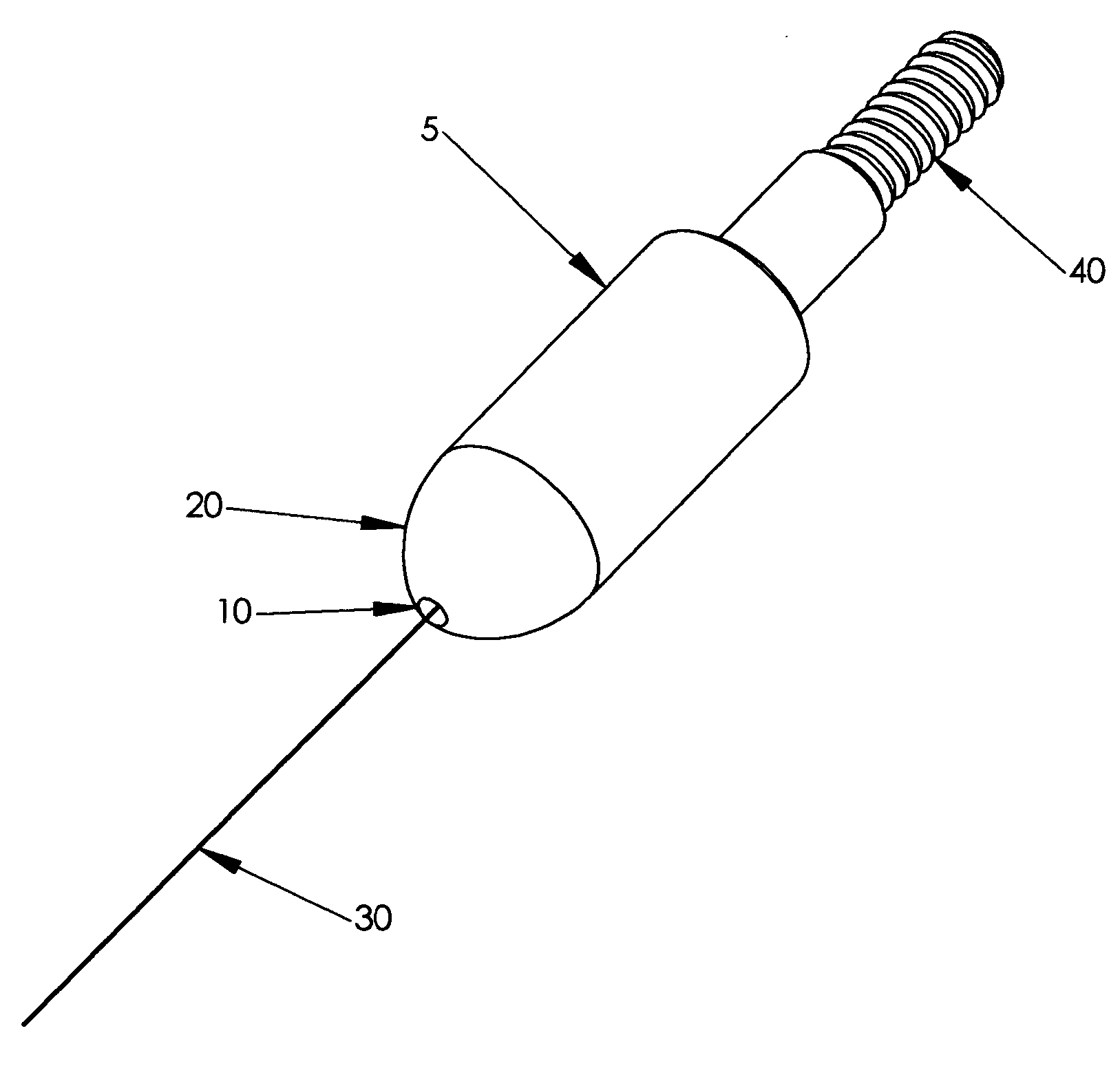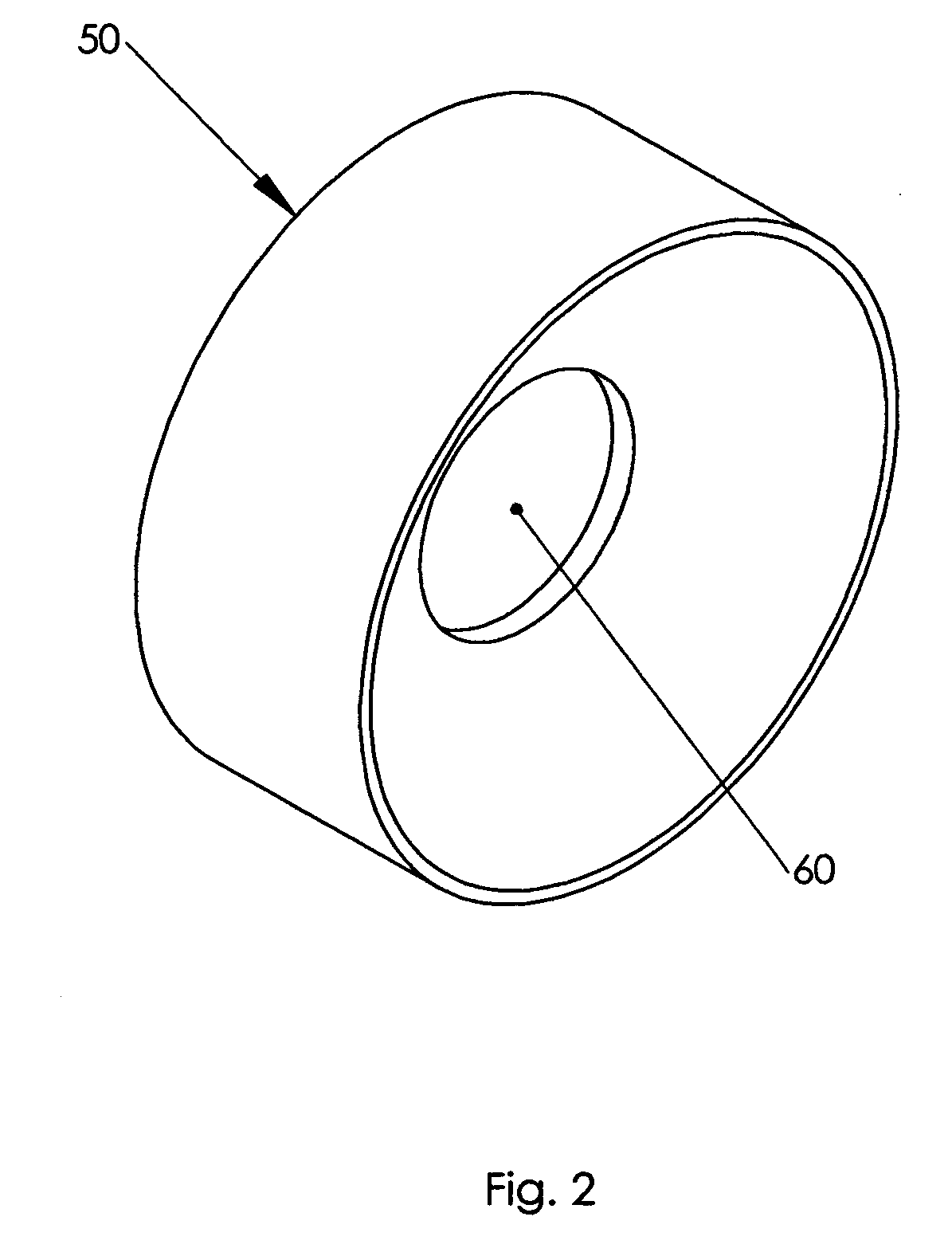Archery laser arrow
- Summary
- Abstract
- Description
- Claims
- Application Information
AI Technical Summary
Benefits of technology
Problems solved by technology
Method used
Image
Examples
Embodiment Construction
[0016] Referring to FIG. 1, an arrowhead comprises an elongated body (5) having an aperture (10) at a first end (20) through which a laser beam (30) projects. The arrowhead also comprises a threaded end (40) for attaching to different arrows. The laser is integrated into the arrowhead such that the laser beam projects through the aperture in a parallel and substantially coaxial relationship with the arrow. The aperture may comprise a glass window or some other transparent media that allows the laser beam to emanate unobstructed from the arrowhead.
[0017] Referring to FIG. 2, a sight (50) fabricated with an optical filter in the aperture (60) visually enhances the laser spot produced on the target. The current embodiment consists of a laser having a wavelength of 650 nm and thus a corresponding sight consisting of a filter that blocks most of the other visible wavelengths except those around 650 nm. The sight filter is designed to pass the wavelength of the laser. Other wavelength la...
PUM
 Login to View More
Login to View More Abstract
Description
Claims
Application Information
 Login to View More
Login to View More - R&D
- Intellectual Property
- Life Sciences
- Materials
- Tech Scout
- Unparalleled Data Quality
- Higher Quality Content
- 60% Fewer Hallucinations
Browse by: Latest US Patents, China's latest patents, Technical Efficacy Thesaurus, Application Domain, Technology Topic, Popular Technical Reports.
© 2025 PatSnap. All rights reserved.Legal|Privacy policy|Modern Slavery Act Transparency Statement|Sitemap|About US| Contact US: help@patsnap.com



